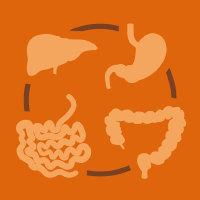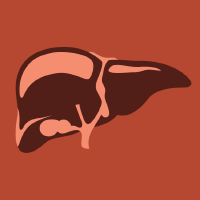Topic Menu
► Topic MenuTopic Editors


Multiple Organ Cross-Talk and Nutrition Metabolism in the Development and Progression of NAFLD / MAFLD
Topic Information
Dear Colleagues,
The predominant discussion surrounding liver diseases has undergone a major transition from viral diseases to nonalcoholic steatohepatitis (NASH) and metabolic abnormalities of liver disease (metabolic-dysfunction-associated steatohepatitis, MAFLD), both of which are caused by lifestyle-related diseases. Therefore, novel nutritional insight into the risk factors, pathogenesis, prevention, and treatment of NAFLD and MAFLD is needed.
The liver forms a network with various organs to maintain homeostasis, including the gut–liver axis, and it has been suggested that the network with other organs may be involved in the development of NAFLD/MAFLD, their progression, and therapeutic effects.
For example, the disruption of multiorgan crosstalk in conditions, such as insulin resistance, obesity (visceral fat, adipocytokines, and lipotoxicity), changes in intestinal microflora, and sarcopenia, has been actively studied regarding its involvement in the onset and progression of NAFLD or MAFLD. The development of novel treatments and prevention strategies for NAFLD/MAFLD using specific drugs taking into account interorgan crosstalk is also expected.
In this Topic, we welcome the submission of a wide range of original papers and review articles related to NAFLD/MAFLD and other organ diseases, from basic to clinical research, especially from a nutritional perspective.
Prof. Dr. Atsushi Nakajima
Dr. Masato Yoneda
Topic Editors
Keywords
- NAFLD
- MAFLD
- crosstalk
- dysbiosis
- comorbidity
Participating Journals
| Journal Name | Impact Factor | CiteScore | Launched Year | First Decision (median) | APC |
|---|---|---|---|---|---|

Gastroenterology Insights
|
1.5 | 2.8 | 2009 | 38.4 Days | CHF 1600 |

Journal of Clinical Medicine
|
3.0 | 5.7 | 2012 | 17.3 Days | CHF 2600 |

Livers
|
- | 2.0 | 2021 | 26.8 Days | CHF 1000 |

Nutrients
|
4.8 | 9.2 | 2009 | 17.5 Days | CHF 2900 |

Reports
|
0.8 | - | 2018 | 18.4 Days | CHF 1400 |

MDPI Topics is cooperating with Preprints.org and has built a direct connection between MDPI journals and Preprints.org. Authors are encouraged to enjoy the benefits by posting a preprint at Preprints.org prior to publication:
- Immediately share your ideas ahead of publication and establish your research priority;
- Protect your idea from being stolen with this time-stamped preprint article;
- Enhance the exposure and impact of your research;
- Receive feedback from your peers in advance;
- Have it indexed in Web of Science (Preprint Citation Index), Google Scholar, Crossref, SHARE, PrePubMed, Scilit and Europe PMC.

